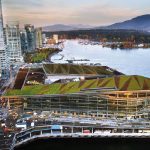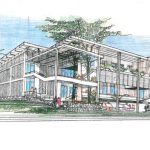-
Community Architecture; Ahead Of Experiments
January 2011
From the beginning of time man has been yearning for some form of cover to shelter himself from sun and rain, from wind and storm. Primitive civilizations found their own ways of building these shelters, ‘homes’ to their own liking, which came to be later branded as ‘vernacular’ in the realm of Architecture. With the advent of the machines and the city based communities throughout the world, came the divisions of highly specialised skills. Highly trained professionals were expected to work as part of the community to uplift the life of the people of the society at large. Architecture emerged as one such area. However, although with very good intentions, some of the projects carried out by professionals failed to bridge the community’s actual aspirations with the solutions provided, in the most sensitive manner, especially in the sphere of housing. As a result, constant researches are undertaken by architects to address this issue, ‘Community Architecture’ being one such approach.
The success of a project is a product of understanding the human as well as the physical geography. Above all, places must be stimulating for people, and buildings and open spaces must be comfortable and safe. This requires an appreciation of the dynamics of the local community, local views and initiatives, local history and custom and the views of other stakeholder groups and individuals.
Community Architecture is simply defined as, architecture carried out with the active participation of the end-users. Consequently, this interactive approach can be traced back to the 1950s self-help community initiatives in the developing countries. These self-help projects saw the professionals joining hands with the people to improve their environment. Community Architecture since then has developed in different forms around the world with a common vision; public participation in decisions affecting their environments and hence their lives.
Community Architecture is based on a democratic system of decision-making that promotes the inclusion of community members on issues concerning their built environment. The experiments have shown in many cases that involving people in their own projects can yield several social and economic benefits that are not possible in the conventional approach. Although all architectural solutions essentially takes into account the end users, this type of Architecture has differed in the form of providing alternative design approaches with three distinct priorities. The first of these priorities is to save what already exists within a neighbourhood, based on the community’s wishes. The second priority demands that the community members be included in the design process for both rehabilitation and new construction alike. It is an established fact that the end-users are most familiar with their needs and requirements, which is also directly related to the success of a project. Based on the same observation, Community Architecture lastly acknowledges the involvement of the community members in the decision-making and management of the community-based projects.
Design is an essential tool for negotiating trade-offs between different interest groups and securing mutually compatible solutions. The best way to gain the necessary understanding of the above factors, and the potential role of design is to adopt a public participation strategy that involves a wide spectrum of local interest groups and individuals.
Peshali Perera











